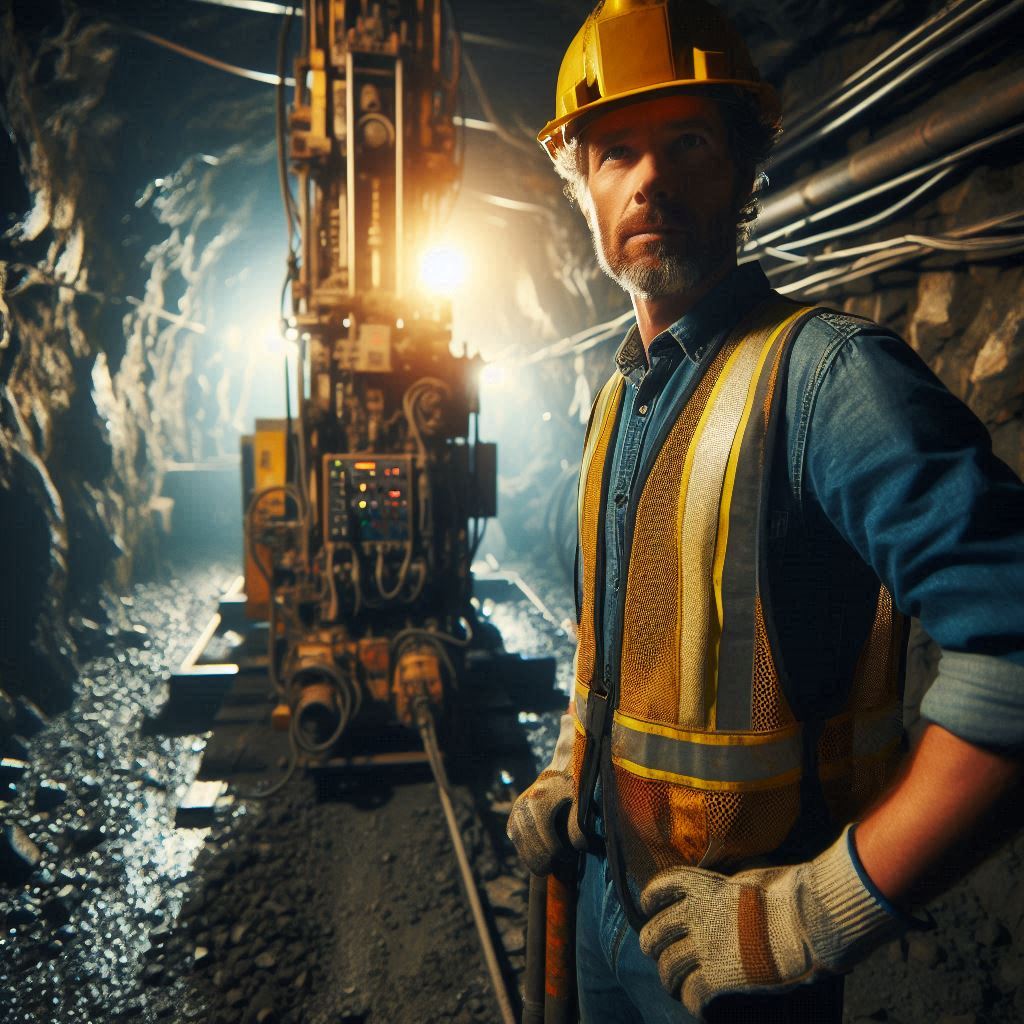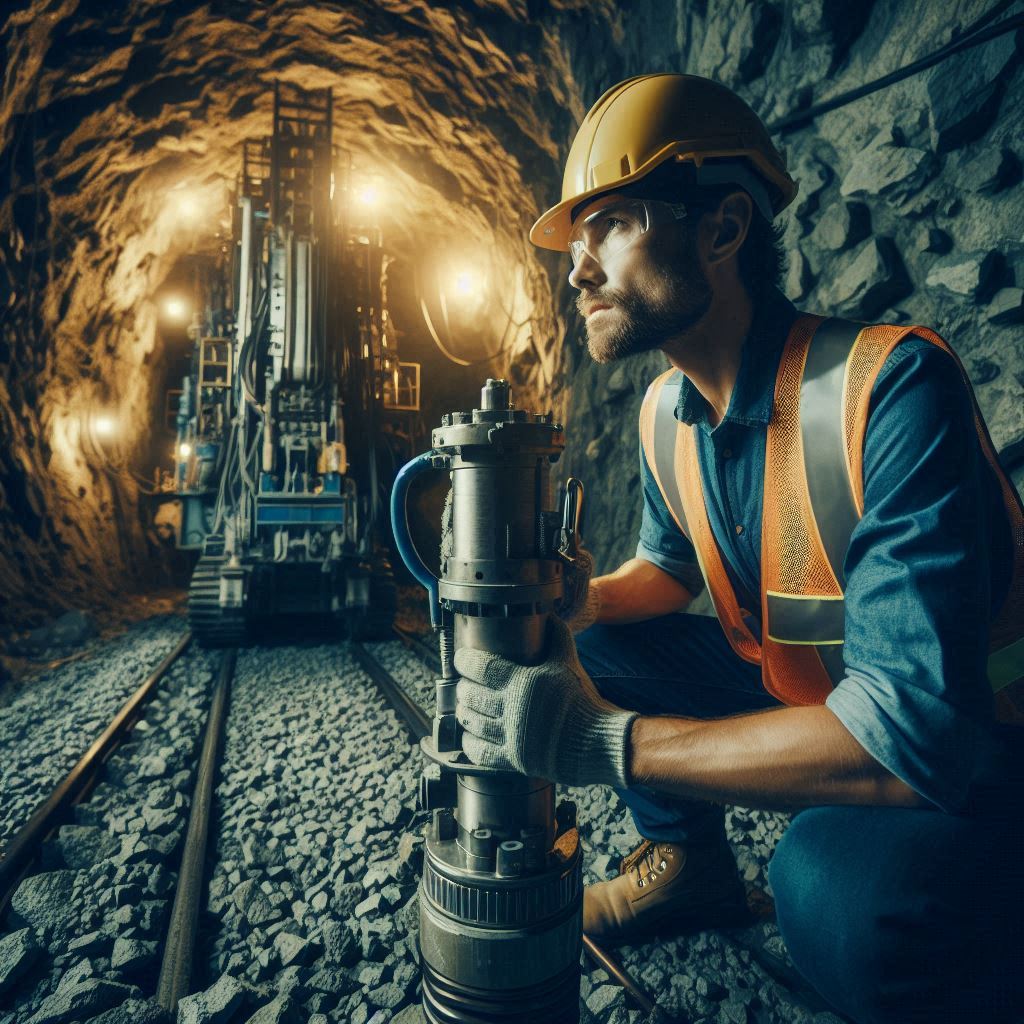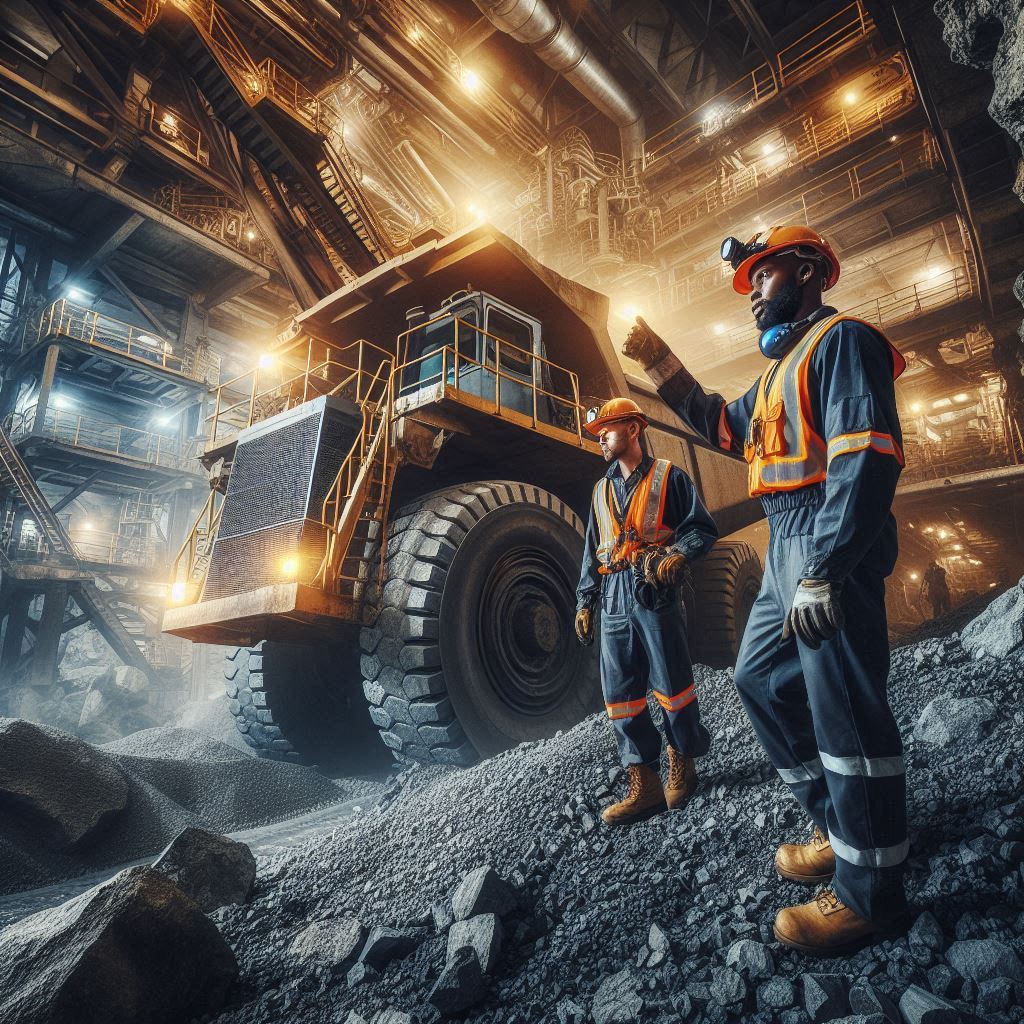Introduction
Brief Overview of the Importance of Mining Engineering in Modern Society
Mining engineering is crucial for modern society.
It provides essential resources like metals, minerals, and energy.
These resources are the backbone of industries, technology, and infrastructure.
Without mining engineering, the development and sustainability of our modern world would falter.
The field supports economies, creates jobs, and drives technological advancements.
As global demands for resources grow, the role of mining engineers becomes increasingly vital.
They ensure the efficient, safe, and sustainable extraction of resources, balancing economic growth with environmental stewardship.
Past Innovations in the Field
The mining industry has seen significant innovations over the years.
Mechanization transformed mining operations, improving efficiency and safety.
The introduction of heavy machinery, such as drills and loaders, revolutionized the extraction process.
Explosive technologies enhanced the ability to access and process ore.
Computer modeling and simulation have allowed for more precise mine planning.
These advancements have reduced costs, increased productivity, and minimized environmental impacts.
Automation and remote control technologies have further enhanced safety and efficiency.
Past innovations have laid the groundwork for the future of mining engineering, setting the stage for even greater advancements.
Transition to Discussing Future Trends and Innovations in Mining Engineering
The future of mining engineering promises exciting trends and innovations.
Sustainable practices will become more prominent, addressing environmental concerns.
Renewable energy sources, such as solar and wind power, will be integrated into mining operations.
Advances in artificial intelligence and machine learning will optimize resource extraction and processing.
Robotics will play a significant role, increasing safety and efficiency.
These trends will reshape the industry, making it more sustainable, efficient, and technologically advanced.
Automation will revolutionize mining.
Autonomous vehicles and drones will handle dangerous tasks, reducing risks to human workers.
Smart sensors and real-time data analysis will enhance decision-making.
Remote operations centers will allow for centralized control of multiple mining sites.
These technologies will streamline operations, improve safety, and reduce costs.
Innovations in mineral processing will also drive the future of mining.
New techniques will increase the efficiency of extracting valuable minerals from ore.
Environmentally friendly processes will reduce waste and pollution.
Recycling and reprocessing of mining waste will become more common, recovering valuable resources and reducing environmental impacts.
Sustainability will be a key focus.
Companies will adopt greener practices, reducing their carbon footprint.
Water conservation and management will be crucial, addressing one of the most significant environmental challenges in mining.
Biodiversity conservation efforts will protect ecosystems around mining sites.
The future of mining engineering will be shaped by collaboration and innovation.
Engineers will work with environmental scientists, data analysts, and technologists to develop new solutions.
Ongoing research and development will drive continuous improvement in mining practices.
The industry will evolve, meeting the demands of a growing global population while minimizing its environmental impact.
Automation and Artificial Intelligence
Automation and Artificial Intelligence are at the forefront of transforming the mining industry.
These technologies bring about numerous advantages, from increased efficiency to enhanced safety measures.
Let’s delve into how automation and AI are reshaping the future of mining engineering.
Revolutionizing the Mining Industry
- Automation in mining involves the use of control systems and technology to streamline operations.
- Artificial intelligence enhances decision-making processes by analyzing vast amounts of data.
- These technologies enable mining companies to operate unmanned vehicles and machinery.
Benefits of Automation and AI
- Increased Efficiency: Automation reduces human error and accelerates tasks.
- Enhanced Safety: AI can predict potential hazards and mitigate risks in real-time.
- Cost Savings: Automating repetitive tasks leads to lower operational costs.
Companies Implementing Automation and AI
- Rio Tinto: Utilizes autonomous trucks and drills in its mining operations.
- BHP Billiton: Implements AI for predictive maintenance and optimizing processes.
- Vale: Incorporates automation in its mineral extraction and transportation operations.
Overall, automation and artificial intelligence are revolutionizing the mining industry by increasing operational efficiency, enhancing safety protocols, and reducing costs.
As more companies embrace these technologies, we can expect to see further advancements in the field of mining engineering.
Read: Biomedical Engineering: Regulatory Affairs
Sustainable Mining Practices
When discussing the future trends and innovations in mining engineering, one of the key areas that cannot be overlooked is sustainable mining practices.
The mining industry has historically been associated with environmental degradation and negative impacts on local communities.
However, there is a growing trend towards adopting sustainable mining practices that prioritize environmental conservation and community relations.
Exploration of Sustainable Mining Practices
- Developing sustainable mining practices involves a shift towards more responsible and environmentally friendly methods of extraction and processing.
- Companies are increasingly looking for ways to minimize their carbon footprint and reduce waste generation in their operations.
- Utilizing clean energy sources such as solar and wind power is becoming more common in mining operations to reduce reliance on fossil fuels.
- Implementing recycling systems for water and waste materials is another key aspect of sustainable mining practices.
- By embracing these technologies and practices, mining companies can reduce their impact on the environment and improve their overall sustainability performance.
Impact on Environmental Conservation and Community Relations
- Adopting sustainable mining practices has a positive impact on environmental conservation by reducing pollution and preserving natural habitats.
- By implementing clean energy sources, mining operations can decrease their greenhouse gas emissions and contribute to mitigating climate change.
- Recycling systems help in minimizing waste generation and reducing the need for additional raw materials, thus conserving natural resources.
- Engaging with local communities and fostering positive relationships through sustainable practices can lead to greater social acceptance and support for mining projects.
- Overall, sustainable mining practices not only benefit the environment but also contribute to the long-term success and viability of mining operations.
Generally, the shift towards sustainable mining practices is a crucial development in the mining industry that is driven by the need to address environmental concerns and improve community relations.
By exploring new technologies and adopting innovative practices, mining companies can pave the way for a more sustainable future in the industry.
Read: Graduate Studies in Biomedical Engineering
Digital Twin Technology
In the realm of mining engineering, digital twin technology has emerged as a game-changer.
It involves creating a virtual replica of a physical asset, process, or system.
Explanation of how digital twin technology is being used in mining engineering
By implementing digital twin technology in mining operations, engineers can monitor, analyze, and optimize various aspects of the mining process in real-time.
This allows for better decision-making and improved efficiency.
For instance, a digital twin of a mining truck can provide insights into its performance, health, and maintenance needs.
This data can be used to predict potential issues before they occur, thus reducing downtime and improving productivity.
Benefits such as improved decision-making and predictive maintenance
- Improved Decision-Making: Digital twins enable mining engineers to have a comprehensive view of their operations, allowing them to make informed decisions based on real-time data.
- Predictive Maintenance: By analyzing the data collected from digital twins, mining companies can predict when equipment maintenance is required, preventing costly breakdowns and optimizing maintenance schedules.
Case studies of successful implementation in the field
One notable example of successful implementation of digital twin technology in mining engineering is the use of digital twins in underground mining operations.
By creating digital twins of underground mines, engineers can simulate different scenarios and optimize ventilation, ore extraction, and safety measures.
This has led to increased productivity, reduced accidents, and improved overall efficiency.
Another case study involves the use of digital twin technology in predictive maintenance of mining equipment.
By analyzing data from digital twins of machinery, companies have been able to identify potential issues before they escalate, saving time and money in the long run.
In general, digital twin technology is revolutionizing the field of mining engineering by providing real-time insights, improving decision-making, and optimizing maintenance practices.
As the technology continues to evolve, we can expect even more innovative applications in the mining industry.
Read: Networking Tips for Biomedical Engineers

Advanced Data Analytics
Data analytics has become a game-changer in the field of mining engineering, revolutionizing the way mining operations are managed.
Let’s delve into how advanced data analytics is shaping the future of the mining industry.
Overview Of How Data Analytics Is Transforming The Way Mining Operations Are Managed
One of the key aspects where data analytics is making a significant impact is in the management of mining operations.
By harnessing the power of data, mining companies can gain valuable insights that enable them to make informed decisions and optimize their processes.
Predictive Modeling
Predictive modeling is a technique that uses historical data to predict future outcomes.
In the context of mining engineering, predictive modeling can help in forecasting equipment maintenance needs, identifying potential risks, and optimizing production schedules.
Trend Analysis
Trend analysis involves the examination of historical data to identify patterns and trends that can provide valuable insights into the performance of mining operations.
By analyzing trends, mining companies can make data-driven decisions to improve efficiency and productivity.
Optimization Techniques
Optimization techniques help mining companies maximize their resources and output by optimizing various aspects of their operations.
This can include optimizing the use of equipment, reducing energy consumption, and streamlining processes to achieve higher levels of efficiency.
Examples Of Mining Companies Using Data Analytics To Improve Productivity
- Company A has implemented data analytics to track equipment performance and predict maintenance needs, resulting in reduced downtime and increased operational efficiency.
- Company B utilizes trend analysis to identify patterns in ore grades and optimize their processing techniques, leading to higher mineral recovery rates.
- Company C leverages predictive modeling to forecast demand for minerals and adjust their production levels accordingly, ensuring optimal inventory management.
In a nutshell, data analytics is driving innovation in mining engineering by enabling companies to unlock the full potential of their operations through predictive modeling, trend analysis, and optimization techniques.
Transform Your Career Today
Unlock a personalized career strategy that drives real results. Get tailored advice and a roadmap designed just for you.
Start NowRead: Biomedical Engineer: Working in Healthcare Tech
Robotics and Drones in Mining
Robotics and drones have revolutionized the mining industry by providing innovative solutions for exploration, excavation, and monitoring in mining operations.
These technologies offer a wide range of advantages, including increased safety, accuracy, and efficiency.
Let’s explore how robotics and drones are transforming the field of mining engineering.
How Robotics And Drones Are Being Used For Exploration, Excavation, And Monitoring In Mining Operations
One of the key areas where robotics and drones are making a significant impact is in exploration.
Drones equipped with high-resolution cameras and sensors can be used to survey vast areas of land quickly and accurately.
This data can then be analyzed to identify potential mining sites with greater precision than traditional methods.
Robotic vehicles are also being used to explore challenging terrains that are difficult or dangerous for humans to access.
These robots can collect samples, conduct tests, and gather valuable data that can help mining companies make informed decisions about where to extract valuable resources.
Excavation in Mining
Robotic systems are increasingly being deployed for excavation tasks in the mining industry.
Autonomous excavators and loaders can operate in remote locations without the need for human operators, reducing the risk of accidents and improving overall efficiency.
These robotic systems can perform repetitive tasks with greater precision and consistency than human workers, leading to higher productivity and cost savings for mining operations.
They can also work in hazardous environments without putting human lives at risk, making mining activities safer and more sustainable.
Monitoring in Mining
Drones are playing a critical role in monitoring mining operations by providing real-time data on production, safety, and environmental impact.
These unmanned aerial vehicles can fly over mining sites to capture images and video footage that can be used to assess the progress of projects and identify potential issues.
Robotic sensors installed in mining equipment can also collect data on operational performance, equipment health, and environmental conditions.
This information can help mining companies optimize their processes, prevent downtime, and ensure compliance with regulatory standards.
Advantages of Robotics and Drones in Mining
- Increased Safety: Robotics and drones reduce the risk of accidents and injuries for human workers in mining operations.
- Accuracy: These technologies offer precise data collection and analysis, leading to better decision-making.
- Efficiency: Robotic systems can perform tasks faster and more efficiently than traditional methods, improving overall productivity.
- Cost Savings: By automating repetitive tasks, mining companies can reduce labor costs and increase profitability.
- Sustainability: Robotics and drones help minimize the environmental impact of mining activities through efficient resource utilization.
Case Studies of Successful Integration
Several mining companies have successfully integrated robotics and drones into their operations, showcasing the benefits of these technologies in real-world applications.
One notable example is Rio Tinto, which has deployed autonomous trucks, drills, and trains in its mining operations.
These robotic systems have helped Rio Tinto improve safety, increase productivity, and reduce costs across its global operations.
The company’s use of drones for site surveying and monitoring has also enhanced its environmental stewardship efforts by minimizing its impact on the surrounding ecosystems.
Another case study is BHP, which has implemented robotic systems for ore processing and logistics in its mining facilities.
By automating these processes, BHP has achieved significant improvements in efficiency, quality control, and resource optimization.
Overall, the successful integration of robotics and drones in mining engineering demonstrates the transformative potential of these technologies in enhancing safety, productivity, and sustainability in the industry.
Learn More: Top Agricultural Engineering Conferences to Attend
Modular Mining Systems
Explanation of How Modular Mining Systems Are Changing the Way Mines Are Operated
Modular mining systems revolutionize the mining industry by providing innovative, adaptable solutions.
These systems consist of interchangeable modules that can be easily configured to suit different mining operations.
This modularity allows mines to customize their equipment setup based on specific needs, ensuring optimal performance.
By using modular systems, mining operations can quickly adapt to changing conditions, such as varying ore quality or market demands.
This flexibility enhances efficiency, reduces downtime, and improves overall productivity.
Additionally, modular systems facilitate the integration of new technologies, enabling mines to stay at the forefront of innovation.
Benefits Such as Flexibility, Scalability, and Cost-Effectiveness
Modular mining systems offer significant benefits, including flexibility, scalability, and cost-effectiveness.
Flexibility is a key advantage, allowing mines to modify their operations without extensive downtime or high costs.
This adaptability ensures that mines can respond swiftly to changes in ore quality, market conditions, and operational requirements.
Scalability is another major benefit, as modular systems enable mines to expand or reduce their operations as needed.
This scalability is crucial for managing fluctuating demand and optimizing resource use.
Cost-effectiveness is perhaps the most compelling benefit, as modular systems reduce initial investment costs and lower maintenance expenses.
By using standardized modules, mines can achieve economies of scale, resulting in significant cost savings over time.
Examples of Mines Using Modular Systems to Adapt to Changing Conditions
Several mines worldwide have successfully implemented modular mining systems to enhance their operations.
For example, the Antamina mine in Peru utilizes modular systems to efficiently manage its polymetallic ore extraction.
This adaptability allows the mine to process different ore types without extensive reconfiguration, optimizing its production.
In Australia, the Boddington gold mine employs modular systems to streamline its operations.
The mine’s modular approach enables it to quickly adapt to varying ore grades and maintain high productivity levels.
Similarly, the Oyu Tolgoi mine in Mongolia uses modular systems to manage its complex ore body.
This flexibility allows the mine to adjust its processing methods in response to changing geological conditions, ensuring consistent output.
Enhancing Operational Efficiency and Sustainability
Modular mining systems also contribute to operational efficiency and sustainability.
These systems allow mines to optimize resource use, reducing waste and minimizing environmental impact.
By integrating advanced monitoring and control technologies, modular systems enable real-time data analysis and decision-making.
This capability improves operational efficiency, enhances safety, and reduces energy consumption.
Additionally, the use of modular systems supports sustainable mining practices by promoting resource conservation and reducing the environmental footprint of mining operations.
Mines can implement renewable energy sources and efficient waste management practices more easily with modular systems, further contributing to sustainability goals.
In review, modular mining systems are transforming the mining industry by offering flexibility, scalability, and cost-effectiveness.
These systems enable mines to adapt to changing conditions, enhance operational efficiency, and promote sustainability.
As the mining industry continues to evolve, modular systems will play a crucial role in driving innovation and ensuring the long-term success of mining operations.
Blockchain Technology in Mining
Blockchain technology has been making waves across various industries, including mining engineering.
In this post, we will discuss how blockchain technology is being utilized in the mining industry, the benefits it offers, and some successful case studies of its implementation.
Discussion of Blockchain Technology in Mining
Blockchain technology is revolutionizing the mining industry by providing a transparent and secure platform for transactions.
It allows for the creation of a decentralized ledger that records all transactions in a secure and tamper-proof manner.
Benefits of Blockchain Technology in Mining
One of the key benefits of blockchain technology in mining is improved supply chain management.
By utilizing blockchain, companies can track the flow of materials from their source to the end-user, ensuring transparency and accountability throughout the process.
Tracking of Materials
Blockchain technology also enables the tracking of materials in real-time.
This allows mining companies to monitor the movement of materials through each stage of the supply chain, reducing the risk of theft or loss.
Case Studies of Successful Implementation
Several mining companies have successfully implemented blockchain technology in their operations.
One such example is De Beers, a diamond mining company, which has created a blockchain platform to track the provenance of diamonds from mine to market.
Improved Transparency
By utilizing blockchain technology, De Beers has improved transparency in the diamond supply chain, ensuring that each diamond is ethically sourced and shipped through secure channels.
Reduced Fraud
Another benefit of blockchain technology is the reduction of fraud in the mining industry.
By creating a secure and transparent ledger, companies can prevent fraudulent activities such as smuggling or misreporting of materials.
Overall, blockchain technology is transforming the mining industry by providing a secure and transparent platform for transactions.
The benefits of blockchain, such as improved supply chain management and tracking of materials, are helping mining companies operate more efficiently and ethically.
With successful case studies like De Beers showcasing the potential of blockchain in mining engineering, we can expect to see more widespread adoption of this technology in the future.
Showcase Your Business Today
Reach thousands of readers actively exploring professional services. Publish your business profile and grow your audience now.
Publish NowLearn More: Interview Tips for Aspiring Engineering Technicians
Conclusion
Recap of Key Future Trends and Innovations in Mining Engineering Discussed in the Blog Post
In the mining engineering field, several transformative trends and innovations are emerging.
Autonomous mining equipment, for instance, revolutionizes the industry by enhancing efficiency and safety.
These machines operate with minimal human intervention, reducing the risk of accidents and increasing productivity.
Additionally, the use of drones for surveying and monitoring has gained significant traction.
Drones provide precise data collection, which improves mine planning and resource management.
Another major trend is the integration of artificial intelligence (AI) and machine learning in mining operations.
AI optimizes various processes, from ore extraction to equipment maintenance, by analyzing vast amounts of data.
This results in more informed decision-making and predictive maintenance, minimizing downtime and operational costs.
Furthermore, the development of environmentally friendly mining techniques is crucial.
Innovations such as bio-mining and the use of renewable energy sources aim to reduce the environmental impact of mining activities.
Digital twin technology also stands out as a game-changer.
By creating virtual replicas of mining operations, engineers can simulate and optimize processes before implementing them in the real world.
This reduces risks and enhances operational efficiency.
Finally, the adoption of blockchain technology ensures transparency and security in supply chain management.
It tracks the origin and movement of minerals, promoting ethical sourcing and reducing the likelihood of fraud.
The Importance of Staying Updated with Technological Advancements in the Field
Staying updated with technological advancements is vital for professionals in mining engineering.
The rapid pace of innovation requires continuous learning and adaptation.
Professionals who remain informed about new technologies and methodologies gain a competitive edge.
They can implement the latest tools and practices to improve safety, efficiency, and sustainability in their operations.
Moreover, embracing technological advancements fosters a culture of innovation within the industry.
It encourages engineers to think creatively and explore new solutions to longstanding challenges.
For instance, the adoption of AI and machine learning not only enhances operational efficiency but also opens up new avenues for research and development.
By staying current with these advancements, professionals can contribute to the evolution of mining engineering and drive the industry forward.
Additionally, staying updated with technological advancements helps address regulatory and environmental challenges.
Governments and regulatory bodies increasingly emphasize sustainable practices and environmental responsibility.
Professionals who are well-versed in the latest green technologies can ensure compliance with regulations and reduce the environmental footprint of mining activities.
This not only benefits the environment but also enhances the reputation and social license of mining companies.
Call to Action for Professionals to Continue Exploring and Implementing These Innovations in Their Work
Professionals in mining engineering must actively explore and implement these innovations in their work.
By embracing new technologies and methodologies, they can enhance operational efficiency, safety, and sustainability.
Continuous professional development is essential.
Engaging in training programs, attending conferences, and participating in industry forums are effective ways to stay informed about the latest advancements.
Collaboration is also key.
Professionals should seek opportunities to collaborate with researchers, technology providers, and other stakeholders.
This fosters knowledge sharing and accelerates the adoption of innovative solutions.
Furthermore, investing in research and development is crucial.
Mining companies should allocate resources to explore new technologies and develop customized solutions for their specific needs.
Ultimately, the future of mining engineering depends on the willingness of professionals to embrace change and drive innovation.
By staying updated with technological advancements and proactively implementing them, mining engineers can lead the industry towards a more efficient, safe, and sustainable future.
[E-Books for Sale]
The Big Book of 500 High-Paying Jobs in America: Unlock Your Earning Potential
$19.99 • 500 High-Paying Jobs • 330 pages
Explore 500 high-paying jobs in America and learn how to boost your career, earn more, and achieve success!
See All 500 High-Paying Jobs of this E-Book
1001 Professions Without a Degree: High-Paying American Jobs You Can Start Now
$19.99 • 1001 Professions Without a Degree • 174 pages
Discover 1001 high-paying jobs without a degree! Unlock career tips, skills, and success strategies for just $19.99!




